Thingiverse

folded medical facial shield, no 3d print required by dsysko
by Thingiverse
Last crawled date: 4 years, 1 month ago
There are so many new options out there to meet the facial shield need of medical care-givers in reaction to the limited availability of these devices. This is especially true right now during the rapid rise in COVID-19 / Corona virus spread. We are so fortunate that so many are motivated to donate their time and resources to this life-saving effort. Thank you all!
Unfortunately, many areas don't have a lot of 3D printing or laser cutting resources, and even when they do, the prints can be complicated, time-consuming to make, or require multiple materials to finish the facial shields.
This project is intended to be usable for the greatest range of communities, with the most modest of resources, while requiring the least amount of technical skill or equipment. This face shield uses a single standard office-paper sized transparent plastic sheet, the kind typically used for overhead projectors or for report covers. I've included A4 and US-letter versions. It also requires either a laser or inkjet printer.
I don't intend for this to replace any of the high quality options that are out there, both from the maker community as well as commercial outfits. Instead, this is really aimed at the outposts or those truly hit hard with a serious outbreak. Basically, anywhere that the need urgently outstrips the availability of all other options.
The design is inspired by origami. There are only two folds here, mountain and valley. For more info, check this link:http://www.origami-instructions.com/origami-valley-and-mountain-folds.html
Instructions:
If you DO have a 3d printer:
Print the front and back STL files of the jig. it is for US-Letter size, NOT yet ready for A4. I'll update ASAP.
Place the plastic sheet between the front and back parts of the jig. the points on the back part of the jig should line up with the holes on the front side of the jig. Make sure the plastic sheet is aligned straight and all the way into the corners of the jig.
Use a ball-point pen to firmly crease the plastic sheet on both sides against the curves provided.
Cut or punch out the holes at the locations where dimples have been made on the sides of the shield.
Using the creases you made earlier, make the creases much more sharply defined with your fingers. Don't forget that one must be a mountain fold, and the other must be a valley fold.
If you DO NOT have a 3d printer, but DO have a laser printer and can print directly to your plastic sheets:
Print the PDF file for your plastic size directly onto the plastic sheet
Place the plastic sheet on a wooden or soft plastic surface
Using a wheel-style pizza cutter, a very dull knife, or a strong pen: trace firmly over the fold lines indicated, the valley fold on the front side of the plastic.
Flip the plastic over and firmly trace the mountain fold on the reverse side of the plastic
Cut or punch out the holes at the locations indicated on the sides of the shield.
Using the creases you made earlier, make the creases much more sharply defined with your fingers. Don't forget that one must be a mountain fold, and the other must be a valley fold.
If you DO NOT have a 3d printer, but DO have an inkjet printer and can NOT print directly to your plastic sheets:
Print the PDF file for your plastic size directly onto a piece of paper the same size as your plastic sheets
Place the plastic sheet on a wooden or soft plastic surface, on top of the printed guide. Try to keep the corners of the guide and the plastic sheet aligned as much as you can.
Using a wheel-style pizza cutter, a very dull knife, or a strong pen: trace firmly over the fold lines indicated, the valley fold on the front side of the plastic.
Flip the plastic over but keep the guide in place and firmly trace the mountain fold on the reverse side of the plastic
Cut or punch out the holes at the locations indicated on the sides of the shield.
Using the creases you made earlier, make the creases much more sharply defined with your fingers. Don't forget that one must be a mountain fold, and the other must be a valley fold.
Now that your shield is folded, insert rubber bands, string, or yarn through the holes and make a strap or cord that should fit around the head above the ears. Adjust this strap so that the shield stays in place but doesn't cause too much pressure.
Take a look at the images to see how it fits. Some of the pictures are made with paper so that you can see how it fits more easily. The transparent sheet is a bit hard to see with my camera.
If you want to make a modification of the jig for yourself, it is on Onshape here:https://cad.onshape.com/documents/12d110feb107370d673a9583/w/92846e0cb4d7b9a24707e92b/e/35c0bab7e83ee05a4f8d79a3
I truly hope this helps you, your communities, and any fellow humans to overcome a potential obstacle in our journey through challenging times. Please share and pass this on to any who need it or are interested.
Met vriendelijk groet,
Dustin
Unfortunately, many areas don't have a lot of 3D printing or laser cutting resources, and even when they do, the prints can be complicated, time-consuming to make, or require multiple materials to finish the facial shields.
This project is intended to be usable for the greatest range of communities, with the most modest of resources, while requiring the least amount of technical skill or equipment. This face shield uses a single standard office-paper sized transparent plastic sheet, the kind typically used for overhead projectors or for report covers. I've included A4 and US-letter versions. It also requires either a laser or inkjet printer.
I don't intend for this to replace any of the high quality options that are out there, both from the maker community as well as commercial outfits. Instead, this is really aimed at the outposts or those truly hit hard with a serious outbreak. Basically, anywhere that the need urgently outstrips the availability of all other options.
The design is inspired by origami. There are only two folds here, mountain and valley. For more info, check this link:http://www.origami-instructions.com/origami-valley-and-mountain-folds.html
Instructions:
If you DO have a 3d printer:
Print the front and back STL files of the jig. it is for US-Letter size, NOT yet ready for A4. I'll update ASAP.
Place the plastic sheet between the front and back parts of the jig. the points on the back part of the jig should line up with the holes on the front side of the jig. Make sure the plastic sheet is aligned straight and all the way into the corners of the jig.
Use a ball-point pen to firmly crease the plastic sheet on both sides against the curves provided.
Cut or punch out the holes at the locations where dimples have been made on the sides of the shield.
Using the creases you made earlier, make the creases much more sharply defined with your fingers. Don't forget that one must be a mountain fold, and the other must be a valley fold.
If you DO NOT have a 3d printer, but DO have a laser printer and can print directly to your plastic sheets:
Print the PDF file for your plastic size directly onto the plastic sheet
Place the plastic sheet on a wooden or soft plastic surface
Using a wheel-style pizza cutter, a very dull knife, or a strong pen: trace firmly over the fold lines indicated, the valley fold on the front side of the plastic.
Flip the plastic over and firmly trace the mountain fold on the reverse side of the plastic
Cut or punch out the holes at the locations indicated on the sides of the shield.
Using the creases you made earlier, make the creases much more sharply defined with your fingers. Don't forget that one must be a mountain fold, and the other must be a valley fold.
If you DO NOT have a 3d printer, but DO have an inkjet printer and can NOT print directly to your plastic sheets:
Print the PDF file for your plastic size directly onto a piece of paper the same size as your plastic sheets
Place the plastic sheet on a wooden or soft plastic surface, on top of the printed guide. Try to keep the corners of the guide and the plastic sheet aligned as much as you can.
Using a wheel-style pizza cutter, a very dull knife, or a strong pen: trace firmly over the fold lines indicated, the valley fold on the front side of the plastic.
Flip the plastic over but keep the guide in place and firmly trace the mountain fold on the reverse side of the plastic
Cut or punch out the holes at the locations indicated on the sides of the shield.
Using the creases you made earlier, make the creases much more sharply defined with your fingers. Don't forget that one must be a mountain fold, and the other must be a valley fold.
Now that your shield is folded, insert rubber bands, string, or yarn through the holes and make a strap or cord that should fit around the head above the ears. Adjust this strap so that the shield stays in place but doesn't cause too much pressure.
Take a look at the images to see how it fits. Some of the pictures are made with paper so that you can see how it fits more easily. The transparent sheet is a bit hard to see with my camera.
If you want to make a modification of the jig for yourself, it is on Onshape here:https://cad.onshape.com/documents/12d110feb107370d673a9583/w/92846e0cb4d7b9a24707e92b/e/35c0bab7e83ee05a4f8d79a3
I truly hope this helps you, your communities, and any fellow humans to overcome a potential obstacle in our journey through challenging times. Please share and pass this on to any who need it or are interested.
Met vriendelijk groet,
Dustin
Similar models
thingiverse
free

Miura-ori Pattern by KauaiMaker
...olar array application, this property reduces the number of motors required to unfold this shape, reducing weight and complexity.
thingiverse
free

Face shield holder by LCLL
...ee photos attached).
it's comfortable, covered on top and it holds the sheet quite firmly although it's quick to replace.
thingiverse
free

Rigidbot 3D printer Tramming Jig by johnsnd
...tandard sae dial indicator collar.
i also provided multiple design files in case you wanted to modify it and make it your own.
thingiverse
free

Razor Scooter Model A replacement Plastic Safety Shield by AlwaysTinkering
... could weaken it. it should not need a sharp 90.
since it is an outdoor item at least petg if you are not doing things like abs.
grabcad
free

arista face shield
...off during use.
this design is not validated and not intended for use as eye or face protection. build and use at your own risk.
thingiverse
free

MonoPrice Mini Delta Air Shield Clips by DodoIsAlive
...heet) will do. cut 3 shields to cover around your delta printer.
i used 5 minute epoxy to glue the magnets to the clips.
cheers!
thingiverse
free

Face shield frame by Fricis_Pirtnieks
... your face.
additional clear sheet of plastic must be attached into hooks for full face guard.
small screws were used for hinges.
grabcad
free

Acrylic PPE face shield holder for A4 PVC plastic
...rinted-face-shield-with-10-mil-pvc
problem with that is that its slow to make and its not easy to clean/hygienic for longer use.
thingiverse
free

TP FOLDING TEMPLATE, HEART (Toilet Paper)
...in yourself for hours pondering of what the next person is thinking.
if you have other ideas please, share, amuse the rest of us.
thingiverse
free

Face Shield frame by SummersideGuy
...e easy to print in a stack. just ensure you have enough spacing and use supports to separate. i use a 1mm gap between each frame.
Dsysko
thingiverse
free

lens -- filter adapter by dsysko
...e is anything you notice i may have overlooked, or that should be changed.
i hope it works for you!
met vriendelijk groet,
dustin
thingiverse
free

Raspberry Pi V2 camera rear mount by dsysko
... means no support needed, and nice printing even on a modest 3d printer.
i hope this works for you!
met vriendelijk groet,
dustin
Facial
turbosquid
$6

facial massager
...lty free 3d model facial massager for download as 3dm and max on turbosquid: 3d models for games, architecture, videos. (1671002)
3d_export
$10

Cartoon facial
...- face: 5420<br>- tris: 10364<br>- verts: 5379<br>**********************<br>hope you like it, thanks you!
cg_studio
$79

Facial Muscle Structure3d model
....3ds .xsi .obj .max .mb .lxo - facial muscle structure 3d model, royalty free license available, instant download after purchase.
3d_export
$79

Facial Muscle Structure 3D Model
...ya c4d xsi lwo
facial muscle structure 3d model download .c4d .max .obj .fbx .ma .lwo .3ds .3dm .stl digitallab3d 106343 3dexport
turbosquid
$400

Rigged cartoon diver + facial rigging
... available on turbo squid, the world's leading provider of digital 3d models for visualization, films, television, and games.
turbosquid
$80
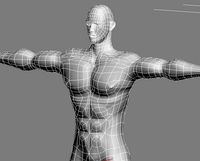
full man body+full facials
... available on turbo squid, the world's leading provider of digital 3d models for visualization, films, television, and games.
3d_export
$5

Minecraft Steve Facial Rig 3D Model
...e facial rig 3d model
3dexport
cinema 4d cheezzy minecraft steve rig
minecraft steve facial rig 3d model cheezzy 61808 3dexport
3d_export
$10

Aang Rig For Maya With Advanced Facial Controls
...ig inspired by the last airbender the rig was devalpd by rigstation and his team mia pray who was model and texture the character
3d_export
$10

Aang Rig For Maya With Advanced Facial Controls
...ig inspired by the last airbender the rig was devalpd by rigstation and his team mia pray who was model and texture the character
turbosquid
$20

Cartoon Man Andy Rigged with Facial Pose Morph
...on man andy rigged with facial pose morph for download as c4d on turbosquid: 3d models for games, architecture, videos. (1408414)
Medical
3d_ocean
$4
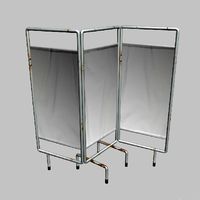
Medical Front
...medical front
3docean
horror low medical
medical front
turbosquid
$100

MEDICAL EQUIPMENT, Equipement Medical
... available on turbo squid, the world's leading provider of digital 3d models for visualization, films, television, and games.
turbosquid
$30
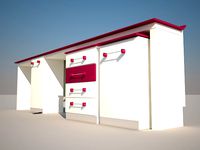
Medical Pallet , Paillasse Medical
... available on turbo squid, the world's leading provider of digital 3d models for visualization, films, television, and games.
3d_export
$18

medical mask
...medical mask
3dexport
medical mask
3d_export
$5

Medical
...medical
3dexport
3d_ocean
$12
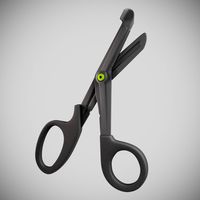
Medical Scissors
...medical scissors
3docean
cut cutter scissors tool. metal medical
realistic high poly model of medical scissors.
3d_export
$6

medics chest
...medics chest
3dexport
medic's chest
turbosquid
$30

Medic
... available on turbo squid, the world's leading provider of digital 3d models for visualization, films, television, and games.
turbosquid
$15
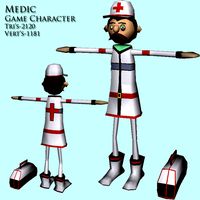
Medic
... available on turbo squid, the world's leading provider of digital 3d models for visualization, films, television, and games.
3d_export
$7
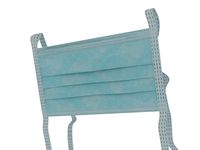
medical mask
...medical mask
3dexport
medical mask against corona virus
Shield
3d_export
$5
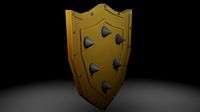
shield
...shield
3dexport
shield
3d_export
$5
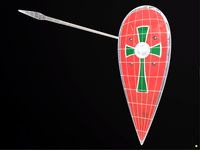
Shield
...shield
3dexport
shield and a spear
3d_ocean
$6

Shield
...shield
3docean
game shield low polygon mei evil shild old shield shield
2048 texture obj,fbx,blend game ready.
3d_export
$5
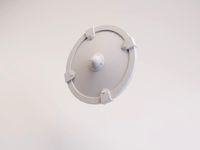
Shield
...shield
3dexport
a shield that hasn't been made of materials will be available to everyone
3d_ocean
$4

Round Shield
...round shield
3docean
ancient battle fantasy knight medieval shield shields warrior
nice model of round shield.
3d_export
free

metal shield
...metal shield
3dexport
russian metal shield - anti-riot shield.
3d_export
$5

shield
...shield
3dexport
old shield, damaged and covered in mold. every file have a zip folder in with textures.
turbosquid
free
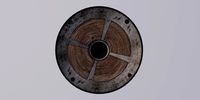
Shield
...shield
turbosquid
free 3d model shield for download as c4d on turbosquid: 3d models for games, architecture, videos. (1164800)
3d_export
$5
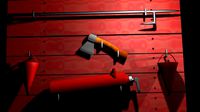
fire shield
...fire shield
3dexport
fire shield
turbosquid
$10
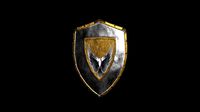
SHIELD
...
turbosquid
royalty free 3d model shield for download as obj on turbosquid: 3d models for games, architecture, videos. (1273553)
Folded
design_connected
$16

Fold
...fold
designconnected
poliform fold computer generated 3d model. designed by torres, rodrigo.
design_connected
$7

Folded
...folded
designconnected
baleri italia folded computer generated 3d model. designed by levy, arik.
3ddd
$1

folding sofa
...3ddd
sofa , folding , sofa bed
folding sofa bed
3d_ocean
$4

Chair folding
...chair folding
3docean
camp chair folding hammock light stool wood
folding chair light wood
3ddd
free

Nando FOLD
... fold , стеллаж
http://www.nendo.jp/en/works/fold-2/?egenre
turbosquid
$9

FOLD
... available on turbo squid, the world's leading provider of digital 3d models for visualization, films, television, and games.
3ddd
free

Folding Chair
...folding chair
3ddd
раскладной
folding chairhttp://www.journal-du-design.fr/design/folding-chair-par-leo-salom-23471/
3ddd
free

FOLDING TABLE
...folding table
3ddd
обеденный
folding table designed by endrit hajno
3d_export
$10

Folding trailer
...folding trailer
3dexport
this is a 3d model of folding trailer for shipping and handling objects
3ddd
$1
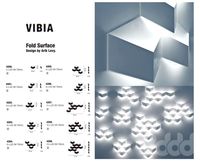
vibia fold surface
...vibia fold surface
3ddd
vibia fold surface , vibia
vibia fold surface
Required
turbosquid
$5

Snow chains required
... available on turbo squid, the world's leading provider of digital 3d models for visualization, films, television, and games.
turbosquid
$20

Made in 3d max 2015. All textures and materials required for rendering are in the archive. The model
...r rendering are in the archive. the model for download as max on turbosquid: 3d models for games, architecture, videos. (1697928)
3d_export
free
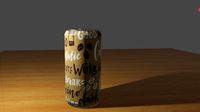
cold coffee
...cold coffee 3dexport cold coffee can. any required modifications will be done at...
3d_export
free

Game console
...game console
3dexport
this is a model of a game console that does not require any plug-ins.
3d_export
$5
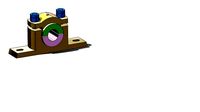
plummer block
...model of plummer block assembly where seven parts are required to assemble...
3ddd
$1

white table (wood)
...white table (wood) 3ddd обеденный tension mod required fbx and obj included high...
3ddd
$1

Fine Art Lamps 420840 Portobello
...portobello 3ddd fine art lamps no third party plugin required ...
3d_export
$7

kitchenware
...kitchen utensils includes all small electrical appliances that are required for interior...
3d_export
$5

star ball
...sizes. small, medium and original size. adhesive may be required ...
3d_export
$5

shock absorber
...absorber can also provide .stp or .iges format if required ...
design_connected
$27
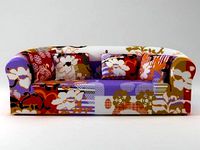
...print
designconnected
moroso print computer generated 3d model. designed by wanders, marcel.
3ddd
free

Eichholtz Prints
...- eichholtz print central station i
13 - eichholtz print central station ii
14 - eichholtz print marisa
15 - eichholtz print tish
3ddd
$1

Eichholtz Prints
...print abstract - set of 2
10 - eichholtz print orange abstract
11 - eichholtz print buddha right
12 - eichholtz print buddha left
turbosquid
$1

... available on turbo squid, the world's leading provider of digital 3d models for visualization, films, television, and games.
3ddd
free
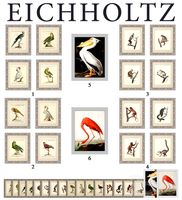
Eichholtz Prints
...of 4
2 - print dunbar 2 set of 4
3 - print guadeloupe 1 set of 4
4 - print guadeloupe 2 set of 4
5 - print giles
6 - print trett
3ddd
$1

Eichholtz Prints
...nt tutti frutti
3 - eichholtz prints watson - set of 2
4 - eichholtz prints antique nautilus - set of 2
5 - eichholtz print tiara
3d_export
$5
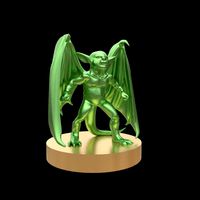
Monster for printing
...monster for printing
3dexport
monster 3d model printing
3ddd
free
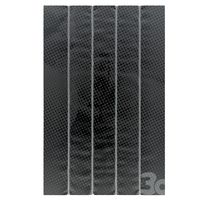
printed rug
...printed rug
3ddd
ковер
very creative printed rug
3ddd
free
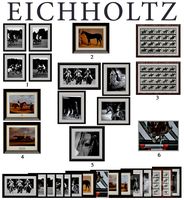
Eichholtz Prints
...иал: бумага
габариты (вхш): 72 x 62 см
описание: print sweetmeat - постер в деревянной раме.
3 - prints varsity set of 2
арти
3ddd
free

Art Print Posters
...art print posters
3ddd
прованс
art print posters by patrician prints
